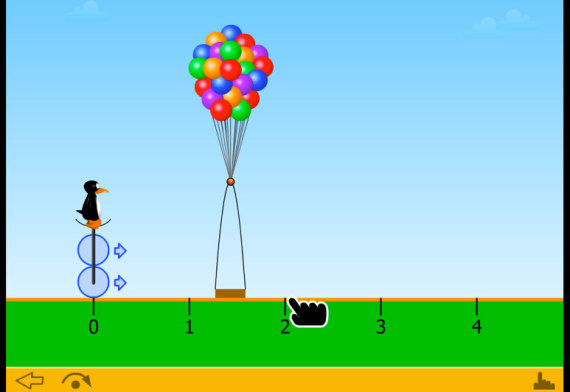
"As part of its second quarter earning announcement today, local transportation and delivery giant Uber announced its biggest bet on autonomous vehicles yet, saying it would purchase 2,500 driverless cars from Google." We're headed to a society of automated transportation. Pretty crazy, huh?
If you thought this announcement was true, you're not alone. This imaginary "Dispatch from the Future" blog post on TechCrunch, dated July 25, 2023, picked up massive circulation among a wide range of news sources. I even heard someone on a technology panel reference it as factual evidence of the disruption occurring in the transportation industry.
We all seem to romanticize around a future that's as easy as pulling out your smartphone and getting an army of driverless cars to take you to your final destination, without questioning its plausibility.
But the reality is, we're not there yet. So don't put your children in an imaginary Uber-Google car alone on the highway.
The same flawed line of overpromising is occurring in blended learning and causing educators around the country to be set up for failure. You hear fantastic promises of kids becoming top scholars just by watching tutorial videos. I personally have a friend who adores this approach and has learned tons of information from it; I've lost count of the badges she has earned. But she also read the dictionary for fun when she was in second grade. The bottom line: Access to anytime/anywhere learning is fantasticassuming there is someone who wants to learn in the first place. After eight years as a teacher and twelve years total in K-12 education, I have yet to walk into a classroom and find that 100 percent of the students are driven, self-motivated learners. You can't just place students in front of digital content and expect them to succeed. This poor practice is what I call "Disjoined Blended Learning."
There is a reason why conducting a Google search using the keyword "teacher" turns up the following related terms: mentor, psychologist, counselor, support, social worker, coach, advisor, tutor, guide and friend. The art of teaching lies in the ability to design a curriculum -- a set of educational experiences -- for students and then motivating them to trust you and come along for the ride. The stakes are high because if you don't engage those students, especially in a blended learning setting, it is exceptionally easy for them to passively coast by or even get up and walk away. To drop out.
One of the first things we must realize in any implementation of blended learning is the fundamental, essential role of the teacher. When the digital content augments the teacher's ability and works collaboratively with him/her, it's a win-win for all parties involved -- especially the students. What would it look like if digital curriculum were designed with this in mind?
Among the best examples I know is MIND Research Institute's Spatial-Temporal (ST) Math instructional software program. Dr. Matthew Peterson, MIND co-founder, chief operating officer and senior scientist, created ST Math nearly 20 years ago with the idea of teaching math the way children learn: visually and experientially. Self-paced and self-motivating, ST Math provides students with immediate, instructive feedback and deepens problem-solving and reasoning skills. Today it reaches more than 630,000 students and 25,000 teachers in 2,050 schools over 35 states. In fact, schools using ST Math programs show, on average, that their students double or triple their standardized achievement scores in math. Dr. Peterson and his team also are committed to investing in program development, using student data, teacher feedback, and the latest education and neuroscientific research to guide ongoing program enhancements.
Best of all, ST Math teaches grit and perseverance. How so? Students using the program occasionally encounter a puzzle that may be multiple levels above their known "ability," and it will be a struggle. They will likely get it wrong 10, 20, 30 times or more. Students will throw their hands up in the air, stand up and pace in circles from frustration, and point fingers at the screen. And then, 15 minutes -- or two days -- later, they'll get it. They'll solve the puzzle, see JiJi the penguin peacefully walk across the screen, and they'll explode in pure triumph and happiness. It's fantastic.

Sample puzzle from ST Math by MIND Research Institute
In my entire life as both a student and a professional educator, I have never seen a non-blended learning model be able to create this type of environment, where students learn to fail in order to learn. It's nearly impossible to create this kind of personalized testing and exploration in a paper-based world.
However, kids -- as well as most adults -- are not used to this learning style. It can create frustration, and it can cause people to get up and walk away from the screen. For this reason, ST Math enables the teacher to keep a pulse on student activity and immediately identify those who need extra help. If a student gets a puzzle wrong an excessive number of times, a yellow bar will appear around the border of the student's screen to give the teacher a quick visual "Help me!" signal.
It's a simple feature, but it shows an acknowledgement that the teacher should and will be physically close to the student to provide support. So many other programs only provide a teacher-facing dashboard, but I don't want myself or any teacher chained to a desk, constantly watching a screen like mission control. It creates a separation between the teacher and the students, and that's exactly against what teachers are trained and love to do.
I want teachers to be empowered to be physically active, moving around the space, talking and joking, coaching and supporting kids. I want kids talking to each other, providing tips and guidance, and developing their ability to work collaboratively. This is the type of blended learning implementation you walk into and immediately say, "This feels right." It's what I call "United Blended Learning." It creates multiple levels of connections that strengthen relationships among students and teachers, and drives the engagement that motivates all learners.
Dr. Peterson and I will lead an interactive conversation about "Connecting the Blended-Learning Dots" at the SXSWedu conference in Austin, Texas, on March 4. We believe technology can improve each student's education experience, and we plan to discuss blended learning in elementary schools, highlight best practices, and unpack how teachers can implement blended learning from the ground up.
The promise of blended learning -- to guide students through an infinite range of content and learning experiences -- is amazing, but the digital content can't do it alone. Blended-learning approaches must respect the role, and the power, of the teacher.
Chris Liang-Vergara was named one of the Top 40 Innovators in Education in 2013 by the Center for Digital Eduation and is the Cheif of Learning Innovation at LEAP Innovations, a nonprofit dedicated to connecting the dots between educators and EdTech companies. Find him on Twitter at @LiangVergara.
This post was originally published on Huff Post ImpactX
Read more about how video games motivate students to play and learn.

MIND Research Institute welcomes guest blogs that highlight best practices in math education, blended learning and innovative learning strategies that inspire students at all ages.
Comment